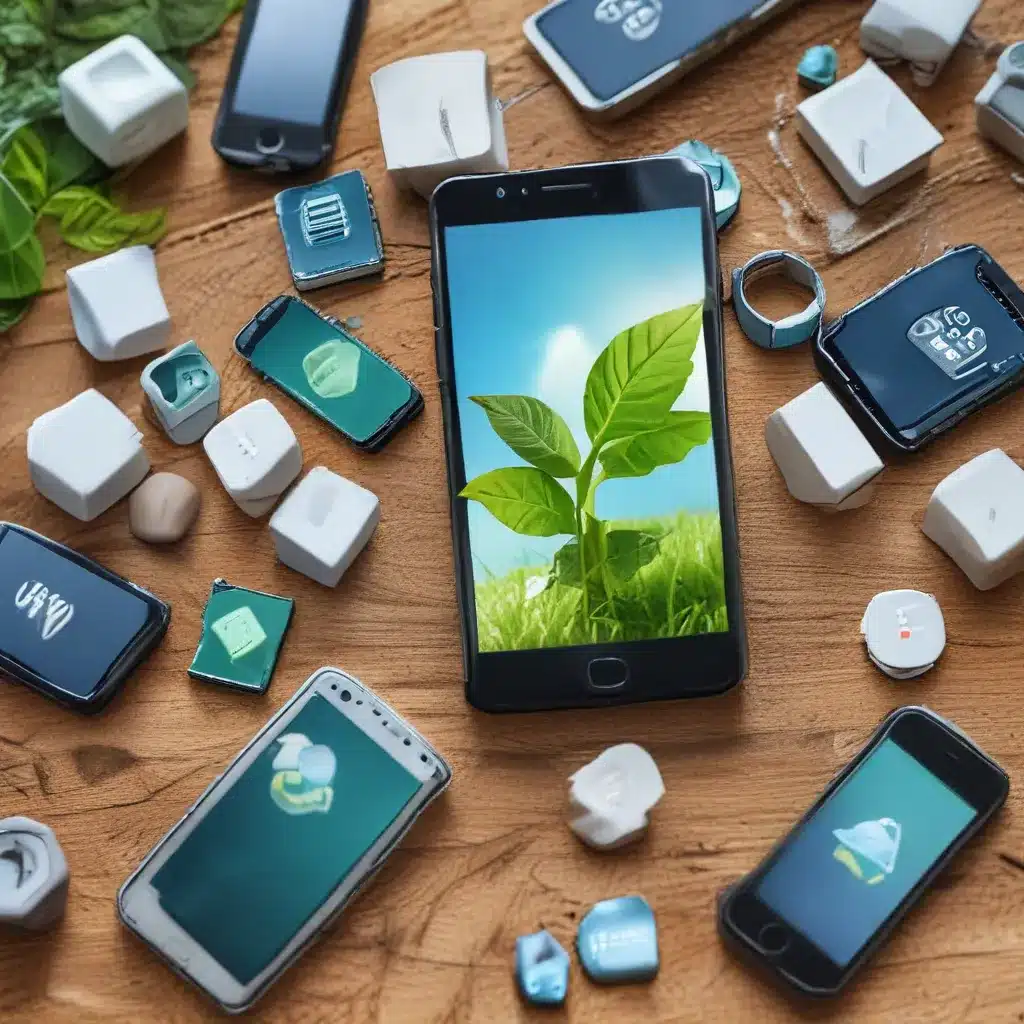Smartphone Sustainability: Eco-Friendly IT Device Management
Confession time: I used to be a smartphone junkie. Upgrading to the latest model every year, chasing the shiny new features, and tossing my old devices in the drawer never to be seen again. That is, until I learned the harsh truth about the environmental impact of our smartphone addiction.
It all started when I joined the IT team at ITFix, an IT services company committed to sustainable technology. They opened my eyes to the staggering scale of the smartphone sustainability crisis and challenged me to rethink my device management habits.
The Smartphone Sustainability Struggle
As it turns out, our collective smartphone obsession is doing serious damage to the planet. According to a recent study by McKinsey, end-user devices like smartphones, tablets, and laptops generate 15-20 times more carbon emissions globally than data centers. And with e-waste volumes reaching an all-time high, the environmental toll is only getting worse.
“It’s a real wake-up call,” shared Alex, the sustainability lead at ITFix. “The rate at which we’re consuming and discarding smartphones is simply not sustainable. We have to find ways to extend the lifespan of these devices and keep them out of landfills.”
Modular Marvels: The Rise of Eco-Friendly Smartphones
Luckily, there’s a growing movement of smartphone manufacturers embracing more sustainable design principles. Companies like Fairphone and Shiftphone are leading the charge with modular, repairable smartphones that aim to reduce e-waste.
“The key is modularity,” Alex explained. “These eco-friendly phones are designed with a limited number of easily replaceable components. So if one part breaks, you don’t have to junk the whole device – you can simply swap out the damaged module.”
This modular approach not only extends the lifespan of the smartphone, but it also makes repairs accessible to non-professionals. No more trips to the Genius Bar or forking over hundreds of dollars for a screen replacement.
Embracing the Circular Economy
Of course, transitioning to more sustainable smartphones is only half the battle. IT teams also need to rethink their entire device management strategy to minimize environmental impact.
“The circular economy is the way forward,” Alex said with conviction. “We have to stop this endless cycle of buying new, using briefly, and throwing away. Instead, we need to keep these devices in circulation for as long as possible through refurbishment, resale, and responsible recycling.”
ITFix has embraced this circular model through their partnership with Everphone, a device-as-a-service (DaaS) provider that handles the entire lifecycle of corporate smartphones.
“With Everphone, we don’t own the devices anymore – we just rent them. They take care of procurement, provisioning, and end-of-life management, including refurbishing and remarketing used devices,” Alex explained. “It’s a win-win for us and the environment.”
Empowering Sustainable Device Practices
Of course, transitioning an entire organization to eco-friendly device management isn’t always easy. There are budgets to consider, user preferences to navigate, and old habits to break. But Alex and the team at ITFix have found creative ways to empower and incentivize sustainable behaviors.
One key strategy is aligning device policies with sustainability goals. “We’ve implemented a ‘bring your own device’ (BYOD) policy that encourages employees to hang onto their personal smartphones for longer,” Alex shared. “Not only does this reduce e-waste, but it also saves the company money on device procurement.”
They’ve also gamified the process, rewarding employees who opt for refurbished or rented devices with perks like extended warranties and flexible upgrade cycles. “People love the idea of ‘going green’ and being part of the solution,” Alex said with a smile.
The Road to Smartphone Sustainability
As I listened to Alex share ITFix’s sustainability journey, I couldn’t help but feel inspired. Sure, the scale of the smartphone sustainability crisis can feel overwhelming. But hearing about the tangible steps they’re taking to minimize their environmental impact gave me hope.
“It’s not about perfection – it’s about progress,” Alex reassured me. “Every small step we take, every device we keep in circulation a little longer, makes a real difference. And that’s what sustainability is all about.”
With that in mind, I’m making a commitment to be more mindful of my own smartphone habits. No more mindless upgrades or careless disposal. Instead, I’ll be exploring modular, repairable options, renting devices when possible, and doing my part to embrace the circular economy.
After all, the future of our planet may very well be in the palm of our hands – or at least, the devices we choose to put there. Let’s work together to make smartphone sustainability the new normal.













